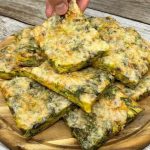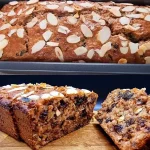Introduction to Pastina Recipes
Our ultimate guide invites you to discover the joy of cooking Pastina recipes. Pastina, translating to ‘little pasta’, holds a beloved place in Italian cuisine. These tiny pasta shapes, often stars, alphabets, or rice-like grains, offer versatility and ease of cooking, forming the base for a variety of delicious Pastina recipes. Join us as we dive into the world of Pastina, exploring its rich history, nutritional benefits, and versatility.
Types of Pastina
There are several types of Pastina recipes, each bringing a unique texture to your dish.
- Star Pastina, the smallest type, is perfect for soups.
- Alphabet Pastina adds a fun twist for children’s meals.
- Furthermore, rice-shaped Pastina, also known as Orzo, is excellent in salads or as a rice substitute.
Basic Pastina Recipe
A basic Pastina recipe requires only a few ingredients:
- Pastina
- Broth (chicken or vegetable)
- Cheese (Parmesan or Pecorino)
- Butter
As a result, these ingredients come together to create a comforting, creamy dish that both children and adults love. For a cheesy twist, you can try incorporating Swiss cheese, similar to this Hot Ham and Swiss Croissants recipe. To understand the nutritional benefits of Pastina, check out Healthline.
Making Pastina requires minimal kitchen tools and is straightforward. You need a pot to boil the pasta, a strainer to drain it, and a spoon to stir in the remaining ingredients. Some recipes may require you to use a knife and chopping board for cutting additional ingredients.
The Pastina Recipe and More
Making Pastina
Making Pastina is simple and quick. Start by boiling the Pastina in broth until it’s tender. The broth not only cooks the pasta but also adds a depth of flavor. Once cooked, drain the Pastina, reserving some broth. Put the Pastina back into the pot, add butter, and stir it until the butter melts and coats the pasta. Then add cheese and continue stirring until the cheese melts into a creamy textureIf the mixture is too thick, add some reserved broth. Serve immediately, topped with more cheese if desired.
Adapting Pastina to Your Taste
You can easily adapt versatile Pastina to suit your taste.
- For a protein boost, try adding an egg to Pastina: whisk an egg into the cooked Pastina and keep stirring until the mixture turns creamy and the egg cooks thoroughly.”
- Pastina with vegetables is a nutritious option; add cooked peas, carrots, or spinach for a colorful and healthy twist.
- For a hearty meal, try Pastina with chicken: add cooked, shredded chicken to the basic recipe.
Choosing the right Pastina is crucial; smaller shapes are better for soups, while larger ones work well in salads or as a side dish. Cook Pastina in broth for more flavor. Be careful not to overcook Pastina; it should be tender but still have a slight bite. You can store leftover Pastina in the refrigerator and reheat it in the microwave Add some broth or water when reheating to prevent it from drying out.
FAQs about Pastina Recipe
- Can I use water instead of broth? Yes, you can cook Pastina in water, but using broth adds more flavor.
- Can I add other ingredients to my Pastina? Absolutely! You can combine versatile Pastina with a variety of ingredients. Try adding vegetables, proteins, or different cheeses.
- How can I store leftover Pastina? Store leftover Pastina in an airtight container in the refrigerator. You should consume it within two days for the best taste.
Pastina is a comforting, versatile dish that’s easy to prepare and loved by all ages. Its simplicity is its strength, allowing a variety of flavors to shine through. Whether you stick to the basic recipe or experiment with different ingredients, Pastina is sure to become a favorite in your kitchen. For a deep dive into the history of pasta, explore Pasta History.
Diving Deeper into Pastina Recipe
While Pastina is a staple in Italian cuisine, its versatility has made it popular in various cultures. People in the United States often use it in soups and casseroles. In the Middle East, cooks use rice-shaped Pastina, or Orzo, in pilafs and salads. In Greece, chefs use it in a traditional lemon chicken soup called Avgolemono.
Pastina is not just delicious; it’s also nutritious. It’s a good source of carbohydrates, providing energy for your day. When enriched with proteins like cheese or eggs, it becomes a balanced meal. Plus, if you use whole grain Pastina, you’ll get a dose of fiber too.
Pastina is a great ingredient to cook with kids. Its quick cooking time and simple recipe steps make it an ideal dish for little hands. Plus, kids love the tiny pasta shapes! Cooking Pastina with your kids can be a fun and educational activity.
Advanced Pastina Recipes
While the basic Pastina recipe is a classic, there are numerous ways to elevate this dish and make it even more delicious. Here are a few advanced Pastina recipes to try:
Pastina Risotto
Transform your Pastina into a creamy, comforting risotto. Start by sautéing finely chopped onions and garlic in olive oil until they’re soft and translucent. Add the Pastina and toast it lightly, then gradually add vegetable or chicken broth, stirring constantly until the Pastina absorbs the liquid. When the Pastina becomes cooked and creamy, add in grated Parmesan cheese and a knob of butter to enhance its richness.Finish with a sprinkle of fresh herbs like parsley or basil.
Pastina Salad
For a refreshing, light dish, try a Pastina salad. Cook your Pastina, then rinse it under cold water to cool it down and stop the cooking process. Toss the cooled Pastina with your favorite salad ingredients – think chopped tomatoes, cucumbers, olives, and feta cheese for a Mediterranean twist. Dress the salad with a simple vinaigrette and serve it chilled.
Pairing Pastina
Pastina is a versatile dish that pairs well with a variety of foods. Here are some ideas:
Wine Pairings
If you’re cooking Pastina with seafood or vegetables, a crisp white wine like Pinot Grigio or Vermentino pairs well with it. If your Pastina dish includes red meat or a tomato-based sauce, try a light red wine like Chianti or Barbera.
Side Dishes
You can serve Pastina as a main dish or use it as a side dish.It pairs beautifully with grilled meats, roasted vegetables, or a fresh salad. For a complete Italian meal, serve Pastina alongside a Caprese salad and a slice of crusty bread.
Storing and Reheating Pastina
You can best enjoy Pastina fresh, but you can also store and reheat it for later meals. Here’s how you can do it.
Storing Pastina
You should cool leftover Pastina completely before transferring it to an airtight container. You can then store it in the refrigerator for up to three days.
Reheating Pastina
To reheat Pastina, you can use either the stovetop or the microwave. If the Pastina has dried out a bit in the fridge, add a splash of broth or water to loosen it up. Heat it gently until it’s hot, then serve.
Conclusion
Whether you’re an experienced cook or a beginner in the kitchen, trying Pastina is worth it. Its simplicity, versatility, and delicious taste make it a standout in Italian cuisine. Why not give it a try? With a pot of boiling water, some Pastina, and a few other ingredients, you can create a comforting, delicious meal that’s sure to impress.












